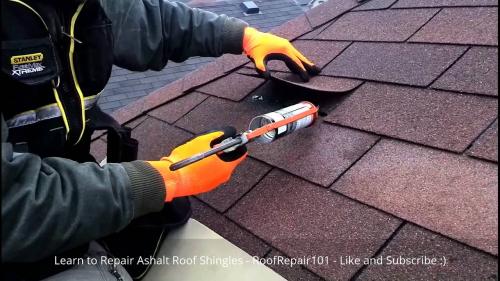How to Repair Roof Shingles: A Step-by-Step Guide

A damaged or missing shingle can be a major concern for homeowners, as it can lead to leaks and further damage to the roof. Repairing roof shingles can seem like a daunting task, but with the right tools and knowledge, it can be a simple DIY project. In this article, we will guide you through the step-by-step process of repairing roof shingles.
Table of Contents
Overview of Roof Shingles
Signs of Damaged Shingles
Tools Required for Repairing Shingles
Types of Shingle Damage
How to Repair a Cracked or Curling Shingle
How to Replace a Missing Shingle
How to Fix a Loose Shingle
Safety Precautions to Consider
Common Mistakes to Avoid
When to Call a Professional
Cost of Repairing Shingles
Preventing Shingle Damage
Conclusion
FAQs
Overview of Roof Shingles
Roof shingles are overlapping elements that protect the roof from harsh weather conditions. They come in various materials, such as asphalt, wood, metal, and tile. Asphalt shingles are the most commonly used type of shingles in the US due to their affordability and durability.
Signs of Damaged Shingles
Inspecting your roof regularly to identify any signs of damage is important. Here are some signs to look out for:
Missing or cracked shingles
Curling or buckling shingles
Discoloration or algae growth
Granule loss
Water stains on the ceiling or walls
Tools Required for Repairing Shingles
Before you begin repairing shingles, make sure you have the following tools:
Safety gear, such as gloves and safety glasses
Ladder
Hammer
Pry bar
Roofing cement
Roofing nails
Replacement shingles
Types of Shingle Damage
Different types of shingle damage can occur. Here are some common ones and how to repair them:
Cracked or Curling Shingles
Lift the damaged shingle with a pry bar.
Apply roofing cement underneath the shingle.
Press the shingle down and hold it in place.
Nail the shingle in place with roofing nails.
Apply roofing cement over the nail heads.
Missing Shingles
Lift the shingle above the missing one with a pry bar.
Slide the replacement shingle underneath the lifted shingle.
Nail the replacement shingle in place.
Apply roofing cement over the nail heads.
Loose Shingles
Apply roofing cement underneath the loose shingle.
Press the shingle down and hold it in place.
Nail the shingle in place with roofing nails.
Apply roofing cement over the nail heads.
Safety Precautions to Consider
Repairing shingles can be dangerous, so it is important to take the following safety precautions:
Wear appropriate safety gear, such as gloves and safety glasses.
Use a sturdy ladder that can reach the roof safely.
Do not work on the roof during bad weather conditions.
Do not step on the shingles, as they can break or slide.
Common Mistakes to Avoid
Here are some common mistakes to avoid when repairing shingles:
Using the wrong type of shingles for replacement.
Using too much roofing cement, which can lead to bulging or cracking.
Not applying enough roofing cement, which can lead to leaks.
Using the wrong size of nails, which can damage the shingles.
When to Call a Professional
If the damage is extensive or you are not comfortable If the damage is extensive or you are not comfortable working on the roof, it is best to call a professional roofer. They have the experience and tools to repair the shingles properly and safely.
Cost of Repairing Shingles
The cost of repairing shingles varies depending on the extent of the damage and the type of shingles used. On average, repairing a few shingles can cost between $100 to $300. However, if the damage is extensive, the cost can increase to several thousand dollars.
Preventing Shingle Damage
To prevent shingle damage, it is important to take the following steps:
Inspect the roof regularly and repair any damage immediately.
Keep the roof clean and free of debris.
Trim overhanging branches that can damage the roof during a storm.
Ensure proper attic ventilation to prevent moisture buildup.
Conclusion
Repairing roof shingles can be a simple DIY project if you have the right tools and knowledge. Following the steps outlined in this article, you can repair cracked, curling, or missing shingles and prevent further damage to your roof. Remember to take the necessary safety precautions and avoid common mistakes to ensure a successful roof repair.
FAQs
Can I replace a few shingles myself? Yes, you can replace a few shingles yourself if the damage is minor and you have the necessary tools and knowledge.
Can I mix different types of shingles? No, it is not recommended to mix different types of shingles as they may have different properties and can affect the overall performance of the roof.
How often should I inspect my roof for damage? It is recommended to inspect your roof at least twice a year, in the spring and fall.
Can I repair shingles during bad weather conditions? No, it is not safe to repair shingles during bad weather conditions. Wait for the weather to improve before attempting any repairs.
How long do shingles last? The lifespan of shingles depends on the type of shingles and the climate in which they are installed. On average, asphalt shingles last between 15 to 30 years.
Post Your Ad Here
Comments